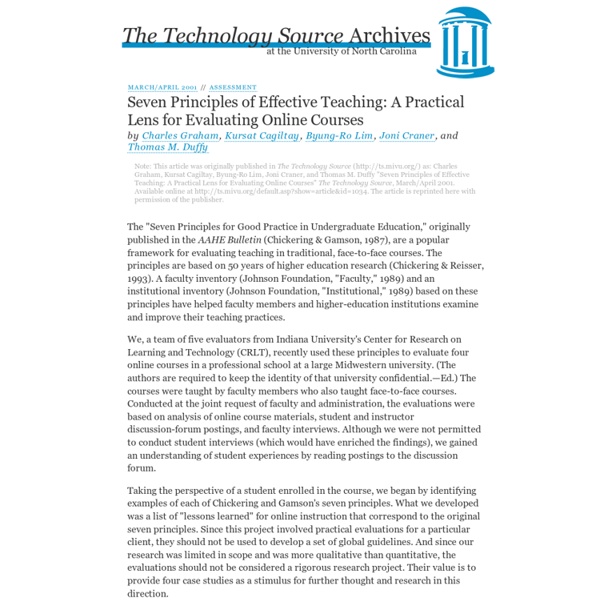Seven Principles of Effective Teaching: A Practical Lens for Evaluating Online Courses

JOLT - Journal of Online Learning and Teaching
Introduction It is generally agreed that learning involves interaction and that it is a communal activity (McMillan & Chavis, 1986; Sarason, 1974). The traditional setting where communal learning activity occurs has been the in-person classroom; however, with the advent of technology that is no longer the case. While communities in general have been considered to be “place-based” (Paloff & Pratt, 1999, p. 21), the success of MySpace.Com and numerous other online communities demonstrate how communities can transcend physical spaces and still have actively engaged participants. The purpose of this survey research was to compare instructor and student perceptions about building community in online university classes. The paper begins by reviewing the literature which has linked community to the learning process and identified it as essential. Literature Survey The Importance of Community to Learning Unique Challenges and Opportunities with Online Learning Communities 1. Method Study Design 1.
keengwe_0610
Ten Best Practices for Teaching Online
J. V. Boettcher, Ph.D. Minor revisions May 2011 Our knowledge about what works well in online teaching and learning is growing rapidly and that is very good news. Here are ten best practices for anyone just getting started in the online environment. Best Practice 1: Be Present at the Course Site Liberal use of a faculty's use of communication tools such as announcements, discussion board postings, and forums communicate to the students that the faculty member cares about who they are, cares about their questions and concerns, and is generally "present" to do the mentoring and challenging that teaching is all about. When faculty actively interact and engage students in a face-to-face classroom, the class develops as a learning community, developing intellectual and personal bonds. We have learned to quantify what it means to "be present." Note: Students who feel abandoned or who feel alone may even post questions, such as "Is anybody there?" This best practice cannot be overemphasized.
Related:
Related:



